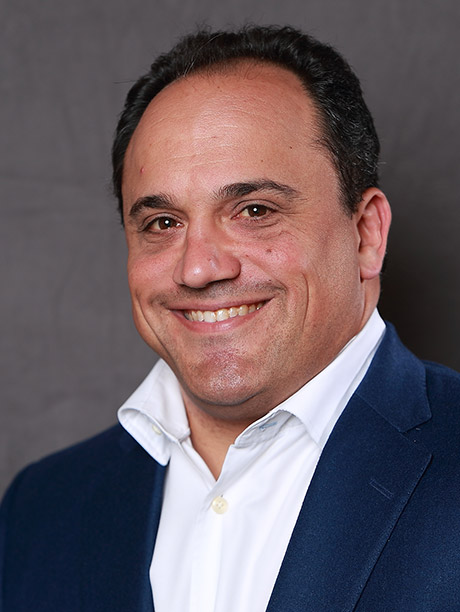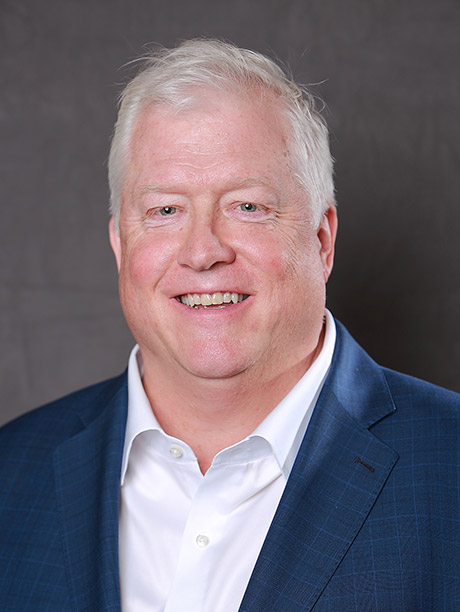By Hillary Canada and Russ Garland
“Happy Days Are Here Again” could have been the official theme song for many U.S. private equity firms that raised new funds in 2014.
But like the late 1920s ditty, the joyful theme of quick and oversubscribed fundraisings and an avalanche of distributions masks some real concerns among investors. Although investors say many firms have exercised prudent oversight of their capital, a growing mountain of dry powder and escalating valuations in both the buyout and venture capital sectors leave some investors worried the industry will raise too much capital and ultimately lower returns.
“There are funds getting raised today that probably shouldn’t be raised, that, if it were a much more competitive environment with fewer dollars, would not be completed,” said Kevin Campbell, managing director and portfolio manager at DuPont Capital Management.
A total of 765 U.S. funds closed on capital during 2014, the highest number of funds since 2000, according to data provider Dow Jones LP Source, a unit of Private Equity Analyst publisher Dow Jones & Co. Together those funds, including buyout and corporate finance, venture capital, mezzanine, funds of funds and secondary funds, raised $266.20 billion, an 11.7% increase from the $238.35 billion raised by 661 funds a year earlier.
PEA counts in its private equity fundraising numbers capital closed on during the year, including interim closes.
Distributions – which globally totaled $444 billion as of June and topped $568 billion in all of 2013, according to data provider Preqin Ltd. – helped fuel the increase, creating what Neuberger Berman Managing Director Tony Tutrone described as a stampede toward high- performing managers. “Many investors’ private equity allocation has fallen below target, and they’re playing a bit of catch-up,” said Scott Reed, a partner at fund-of-funds manager FLAG Capital Management. “Usually, when that happens, LPs try to cram into the same top-quartile managers.”
The Billion Dollar Buyout Fund Club
Capital raised for U.S. buyout and corporate finance funds increased 9.57% over 2013 levels, with both the overall number of funds and the number of funds that closed on $1 billion or more rising over the prior year.
All told, 338 buyout, co-investment, diversified private equity, growth equity, industry-focused, restructuring and distressed debt and real assets funds raised a combined $197.40 billion, compared with 290 funds that raised $180.15 billion a year earlier.
The majority of those funds raised less than $1 billion during the year. But the 53 funds that raised $1 billion or more accounted for nearly $139 billion, more than 70% of the capital raised throughout the year. That compares with about 43 funds that closed on a $1 billion or more during 2013.
San Francisco-based Hellman & Friedman pulled in the biggest haul of the year, raising $10.9 billion for its latest buyout fund.
As limited partners strive to recycle distributions back into new commitments, many of them gravitate to the same managers, pushing more firms further up the fund-size food chain.
Wynnchurch Capital , Riverwood Capital and SK Capital Partners all entered the $1 billion fund club for the first time in 2014. Meanwhile, Pine Brook wrapped up its second fund with $2.43 billion, well above the $1.4 billion that the firm raised for its debut fund back in 2009.
As LPs clamor for allocations with their favorite groups, those groups have also been able to raise capital quickly. Mr. Tutrone said Neuberger Berman had seen several firms coming to market with “one and done” closes. “You either step up in the first close, or you might get reduced or kicked out,” he said.
Marlin Equity Partners ‘ lower midmarket Marlin Heritage LP fund and H.I.G. Capital ‘s H.I.G. Middle Market LBO Fund II LP were among the vehicles this year that were able to hold first and final closes.
“The driving force is returns,” said Alicia Cooney, co-founder of placement agent Monument Group. “If you have previously delivered high-quality returns in excess of the target, your fundraising will be abbreviated.”
Out With Diversified, In With Specialized
Despite a handful of large buyout funds raised by firms such as Hellman & Friedman , Bain Capital , Centerbridge Partners and BDT Capital Partners, overall capital raised by buyout and diversified private equity funds slipped year over year as investors gravitated to firms with specialized expertise.
In 2014, 23 industry-focused funds raised $21.49 billion, more than two-and-a-half times the $5.82 billion raised a year earlier. Vista Equity Partners topped the list as the largest industry- focused fund, raising $5.8 billion to invest in technology. Others, like specialty chemicals- focused SK Capital, were able to dramatically increase their fund size.
“Ten years ago, you wouldn’t have seen that much demand for such narrowly focused GPs,” said Mr. Reed. LPs are “segmenting out the GP universe in ways they hadn’t done. The generalist model is coming under pressure.”
That pressure could build, as new research from Cambridge Associates supports the idea that specialists focusing on consumer, financial services, health care and technology outperformed generalists between 2001 and 2010.
Although dedicated technology and health-care funds caught investors’ attention during 2014, it was energy funds that really pulled in the big bucks. The steady decline in oil prices that started in late June didn’t curb fundraising for real assets vehicles, which raised $49.65 billion, an increase of more than 60% from $30.87 billion a year earlier and the highest since Dow Jones began tracking such data in 2000.
Limited partners piled billions of dollars into dedicated energy vehicles from Warburg Pincus, Kohlberg Kravis Roberts & Co. and Carlyle Group. Industry stalwarts EnCap Flatrock Midstream, Energy Capital Partners and First Reserve Corp. also raised large amounts of money during the year.
“My sense is people were throwing money there and getting anxious that things were overpriced,” said Ms. Cooney. “Maybe with pricing being reset, it might be the right time for exploration and production for smaller funds that are doing conventional drilling.”
Dark Days for Distressed Debt, Mezzanine Industry insiders predict the recent volatility in the oil market could open up some opportunity for distressed debt and turnaround funds. Activity in the larger end of the distressed debt market has been moribund as the receptive credit markets have provided ample refinancing opportunities and pushed low corporate defaults.
“There may be some marginal players who might be at risk if this is sustained,” said Mr. Tutrone. “There could be opportunity for turnarounds.”
Capital raised by distressed debt and restructuring funds dropped precipitously in 2014 with only 33 funds that raised $22.61 billion, a decrease of more than 40% from the $39.13 billion raised across 46 funds a year earlier.
Mr. Tutrone, Ms. Cooney and others said the environment in Europe, where growth is stagnating and banks are still shedding assets to comply with regulations, would likely continue to be a prime spot for distressed and turnaround investors.
Investors also anticipate the environment for distressed deals in the U.S. may improve, which could give such funds a boost in 2015.
“With the view that a year or two years from now, the cycle will turn again, investors want managers in their portfolio with capital and expertise to take care of that dislocation,” said Mr. Reed.
Much like distressed debt funds, mezzanine funds also struggled to attract investor attention in an environment where deal makers had no shortage of cheaper forms of financing, particularly for large transactions. Mezzanine fundraising dropped to $8.66 billion in 2014 from $14.92 billion a year earlier, despite the fact that nearly the same number of managers held closes. Mezzanine funds focusing on small and midmarket deals, where deal makers are less likely to tap the high-yield market, seemed to attract investor capital. Of the 33 managers to hold closings in 2014, just one, GS Capital Partners, closed on more than $1 billion.
VC Reaches Post-Crisis Peak
High returns once again captured the headlines for the venture capital sector in 2014. As returns from 2013 reached the highest level since the dot-com boom, money filtered into funds at the fastest pace since the period before the global financial downturn.
Venture capital fundraising raised $32.97 billion in 2014, a 62% increase over 2013 and the highest total since 2007, as investors poured money into big funds and also showed interest in small pools aimed at early-stage deals.
LP interest ran across the spectrum, with early-stage fundraising up 33.1%, late-stage up 41.0% and multistage up 157.2%. Multistage VC raised the most, with $13.52 billion, followed closely by early-stage, with $13.04 billion.
Eight funds of $1 billion or more accounted for $11.84 billion of the total. The largest were Tiger Global Private Investment Partners IX LP at $2.5 billion and Technology Crossover Ventures VIII LP at $2.23 billion.
The 223 closings by early-stage funds were the most since 2000, with 309 closings. Seed-stage funds such as the $39.8 million pool raised by Boston’s NextView Ventures attracted more attention from institutional investors.
Venture capital is basking in the glow of a record number of portfolio companies with valuations in the billions of dollars, including Uber Technologies Inc. and Airbnb Inc. Venture returns are on the upswing, and 2014 was a strong year for initial public offerings.
Scott Voss, a managing director at investment manager HarbourVest Partners , said venture industry exits in the past 12 to 24 months “have been some of the best venture-backed deals ever done.”
The upbeat atmosphere, however, is tempered by fears some parts of the venture capital industry are overheated – there is plenty of talk of a bubble in Silicon Valley and some leading venture capitalists have urged portfolio companies to be careful about spending. Limited partners, still mindful of the lessons they learned in the dot-com bubble, don’t seem to be rushing blindly back into the asset class.
“We have not seen a big institutional rotation into venture, which is what you saw in 2000,” said Peter Denious, a partner at FLAG Capital Management. Venture funds raised a record $85.07 billion that year.
Like the venture capitalists they back, limited partners are optimistic about the possibilities for technology startups, especially in mobile and Internet-based services.
“The costs are so low to start a company that that’s just a tailwind that’s there. It’s a secular shift, not a cyclical one,” Mr. Denious said.
“We see more waves of innovation and different tech trends that are playing out simultaneously, and that creates a bigger opportunity,” Mr. Voss said.
The fundamental shift in the cost of launching software, and even hardware companies, is leading LPs, especially family offices, to look for ways to increase exposure to seed-stage investing, an area where deal size is growing along with the number of institutional investors.
With venture firms and startups now permitted to advertise their fundraising, new models of raising funds and financing companies are developing. Online financing platform AngelList is one notable example. FundersClub Inc., an online service that organizes funds for wealthy individuals seeking to back startups, was responsible for 19 fund closings in 2014, offering pools such as FundersClub R2D LLC, which raised $560,000.
Early-stage investors are also raising so-called opportunity funds to back hot portfolio companies in later rounds when the size of a deal can be too large for the main fund, as well as to make other investments when the firm thinks it has an edge. Union Square Ventures was one such firm, closing USV Opportunity 2014 LP at $175 million, the same size as its main fund, USV 2014 LP. It was the New York firm’s second opportunity fund.
Jeff Fagnan, a partner at early-stage firm Atlas Venture, said he is seeing renewed interest in VC from family offices, endowments and foundations. Many of them, especially family offices, are interested in making direct investments, a trend he called “very new and very real.” Atlas has offered LPs the opportunity to invest directly in later rounds for several of its portfolio companies and is setting up a vehicle on AngelList to do this on a regular basis, he said.
Secondary Fundraising Hits Record
Much like VC, secondary fundraising reached a full boil in 2014, with huge funds raised by firms including Ardian and Lexington Partners pushing volume to one of the highest levels since LP Source started tracking data in 2000.
In the U.S. and Europe, 28 funds raised an aggregate $23.79 billion, up 46.7% from the $16.21 billion raised by 42 managers a year earlier. Private Equity Analyst aggregates U.S. and European secondary funds as they tend to have wide geographic mandates. For more on European fundraising, see the story on page 50.
In addition to Lexington and Ardian, Blackstone Group unit Strategic Partners and Landmark Partners also raised multibillion dollar amounts for secondary funds in 2014.
Industry experts estimate that secondary deal volume was likely to be record-breaking as well. Ardian Managing Partner Benoît Verbrugghe said in October that the firm estimated deal flow could reach $40 billion for the year, having hovered around $25 billion over the past two years. Mr. Verbrugghe and others have said that sophisticated investors seeking to trim their portfolios and banks facing regulatory pressure were keeping the pipeline for secondary investors full.
Although the market still provides a much-needed liquidity mechanism for the highly illiquid private equity sector, secondary investors appear to be searching deep and wide for deals. Many are getting slim discounts, or are instead paying premiums, according to research from intermediary Setter Capital.
“You wouldn’t believe the amount of in-bound calls we’ve gotten,” said Mr. Campbell of DuPont Capital. “We’re not active sellers in the market.”
Rather, DuPont Capital, which is sometimes a buyer on the secondary market, found itself repeatedly outbid by “significant margins,” said Mr. Campbell.
One large investor voiced concern as some secondary funds have moved beyond buying plain vanilla stakes into so-called general partner restructurings. In a note to investors, Hamilton Lane slammed this practice for allowing zombie funds to survive, saying restructured funds are similar to their previous incarnations but with new investors, and that placement agents benefit from a “hefty fee,” sometimes at the expense of the “hapless exiting limited partners,” according to a report by Private Equity News, a U.K.-based private equity trade publication also owned by Dow Jones.
Although 2014 proved to be a banner year for secondary funds, it was more of the same for funds of funds, which raised about the same amount this year as last.
A total of 78 funds of funds raised a combined $15.05 billion, down slightly from $15.08 billion raised by 91 managers in the U.S. and Europe in 2013. Private Equity Analyst aggregates funds of funds as they tend to have wide geographic mandates.
“The funds of funds that are successful are providing unusual access,” said Ms. Cooney of Monument Group.
Advantage GP
As limited partners found themselves awash with cash and in need of a place to park it, the power dynamics that had for years favored large institutional investors started to shift.
Demand for entry into some of the strongest funds allowed certain general partners to push forward with some fairly unconventional terms. Reuters reported in November that Vista Equity’s latest fund had an unusual clause that allowed it to pay for deals entirely from its fund and to secure financing later as a way to move more nimbly on highly sought-after companies. It reportedly exercised that right to secure one of the biggest take-privates of the year, a $4.2 billion deal for Tibco Software Inc .
“The leverage is in the hands of GPs,” said Mr. Tutrone.
That said, investors haven’t forgotten the lessons they learned during the prior buyout boom and bust. “Even in this current environment, people are still pretty careful about investing with groups just out of loyalty,” said Ms. Cooney. “Reups without doing the work is not something we’re seeing.”
In fact, limited partners see themselves as much more aware than they were before the economic downturn. A survey of 114 limited partners conducted by Coller Capital found that 90% believed their institutions have a deeper understanding of private equity since the global financial crisis.
In a difficult deal environment, LPs want to see not only exits from fundraising general partners, but also a potential pipeline of acquisitions. Ms. Cooney of Monument Group said investors were not “blindly reinvesting” their distributions in PE. Those dollars could filter elsewhere.
But executives agreed that, barring some kind of economic or political shock, 2015 is likely to be another big year for fundraising, including for newly formed firms. “There’s no question there’s been a proliferation of spinoffs or splitoffs,” said Mr. Reed of FLAG. “Junior partners or principals feel that the time is now to hang out their own shingle.”





